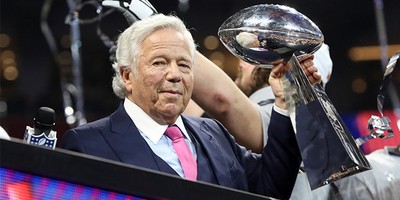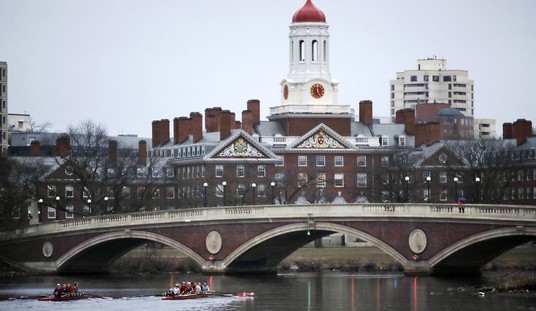WASHINGTON -- St. George's Chapel, located within the walls of Windsor Castle, is anglophile heaven -- a marvel of Gothic in the Perpendicular style, mother church of The Most Noble Order of the Garter, the holy of holies of monarchism. Sitting in the Quire during Sung Evensong, one faces the common grave of Henry VIII and Charles I. Behind and in front are the wooden stalls of the Knights of the Garter, topped by heraldic banners. Above is the enclosed box seat where Victoria would watch services during her endless mourning.
At one point in the service, prayers are said for the kings, queens and members of the royal family who have aided the order. It was the first time I had ever prayed for the soul of Richard III, who may or may not have been responsible for the deaths of his nephews. I suppose everyone can be spared a prayer. Besides, the communion of saints includes more than a few rogues.
This pilgrimage (made a few years ago) came nostalgically to mind while reading a recent article in the Guardian. "This Christmas," it declared, "for perhaps the first time ever, Britain is a majority non-religious nation." In 1985, according to the British Social Attitudes survey, 63 percent of Britons called themselves Christians. In 2010, it was 42 percent, with 51 percent claiming no religion at all.
So all that history -- Cranmer and Laud, roundheads and cavaliers, Henry with his wives and Charles without his head -- has led to a shrug and a yawn. The next monarch will still pledge to "maintain in the United Kingdom the Protestant Reformed Religion established by law." But the meaning is increasingly hollowed out. First a ceremonial monarchy, then a ceremonial religion.
Britain is exhibit A for the secularization thesis -- the idea that modernization and scientific rationality will cause religion to wither and die. That is manifestly false in places such as Africa, India or the Muslim world. Only in Europe does it feel true.
Recommended
Even in Europe, however, the thesis is less compelling under scrutiny. The European past was not nearly as pious as we imagine. Christian conversion on the fringes of the Roman Empire -- in places such as Gaul and Britannia -- was always a shallow and partial affair. Rulers pledged their orthodoxy; the populace hedged their bets with magic and animism. In late medieval times, church attendance was spotty, often with good reason. "Members of the congregation," according to historian Keith Thomas, "jostled for pews, nudged their neighbors, hawked and spat, knitted, made coarse remarks, told jokes, fell asleep and even let off guns."
And the European present is not as secular as church attendance numbers would indicate. Spiritual beliefs broadly persist, even in the absence of formal religious associations.
But the swift decline of European religious institutions is not a small thing. Institutions codify and transmit faith, producing the Perpendicular Gothic and the Book of Common Prayer. They can also discredit faith, especially when too closely tied to the established order -- seeking its favor, implicated in its power games, justifying its scandals. The aid of various Richards throughout the ages comes with a price.
Contrast this to American religion, involving less heraldry and more vitality. The whole pageant is well described in "American Grace," by Robert Putnam and David Campbell. They depict a "highly religious people," divided by contentious social issues but generally tolerant of other religious traditions. Immigration, conversion and intermarriage produce a churn of belief that undermines settled prejudices. American religious congregations cultivate civic engagement, creating citizens who are generous, active and trusting.
All this liveliness comes with some disturbingly American characteristics -- a general theological ignorance, a tendency toward the anodyne, turning a creed into a hobby. But the general impression left by "American Grace" is of a fluid marketplace of faith that is favorable to faith itself.
There are many reasons for this American achievement, but foremost is a commitment to religious freedom -- which originated in the struggles of English Protestants, but was applied in a way the world had not seen before. There would be no Church of America, because Christian belief was compromised by secular alliances, and because true fidelity to God could not be forced. By creating this system, the Founders proved that secularism is not essential to political liberalism. Pluralism will suffice.
The decline in the standing of many religious institutions is undeniable. But this cannot be extrapolated to the end of belief. Institutions grow gray and gouty. Faith, in freedom, is ever new.























Join the conversation as a VIP Member